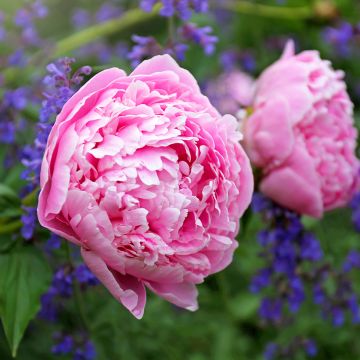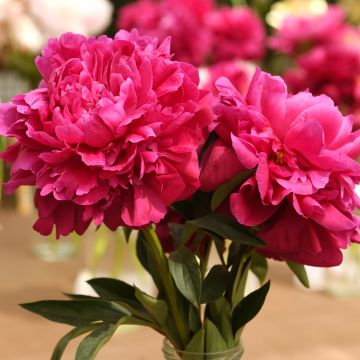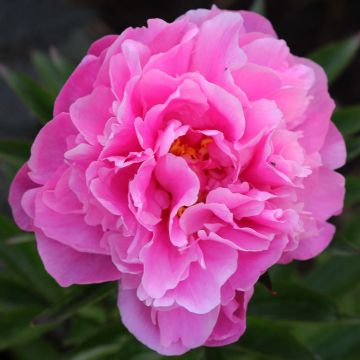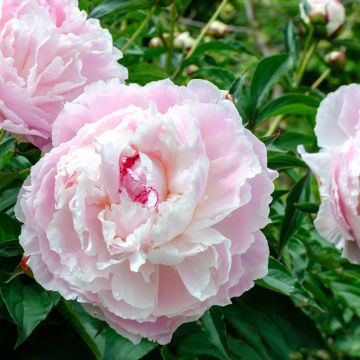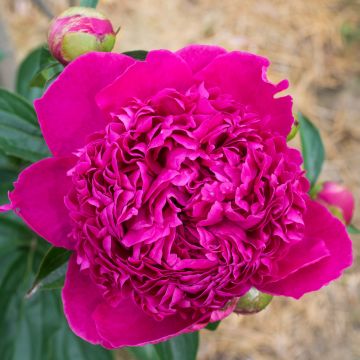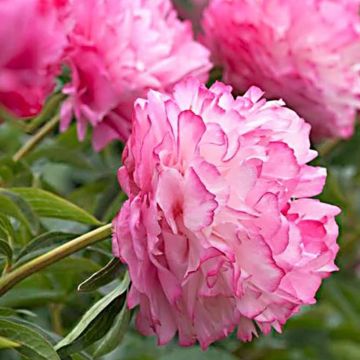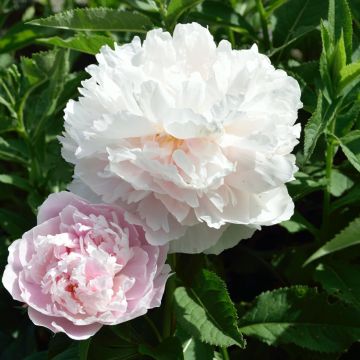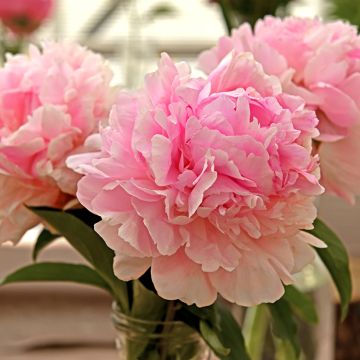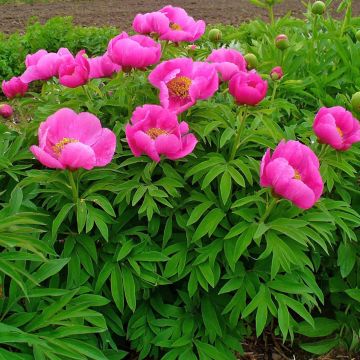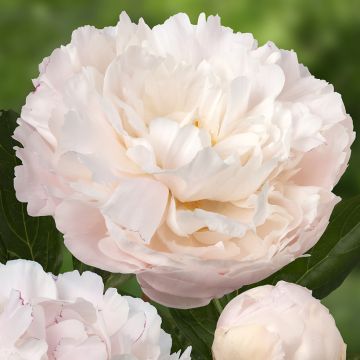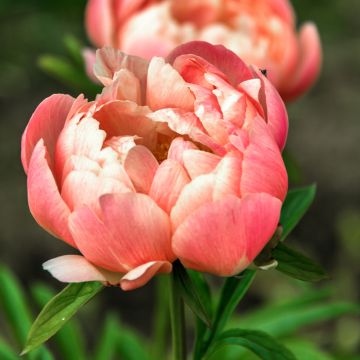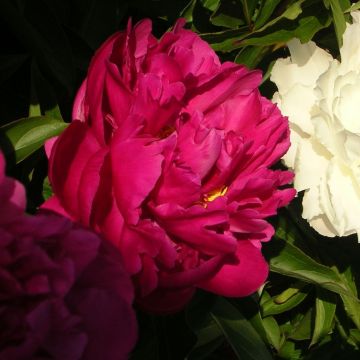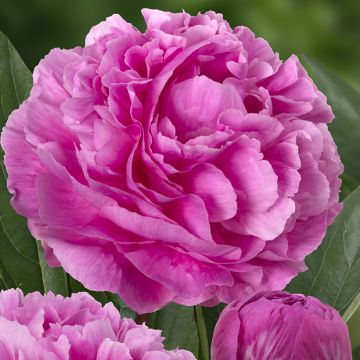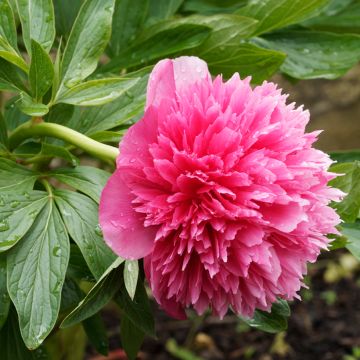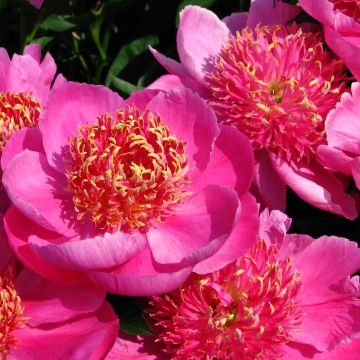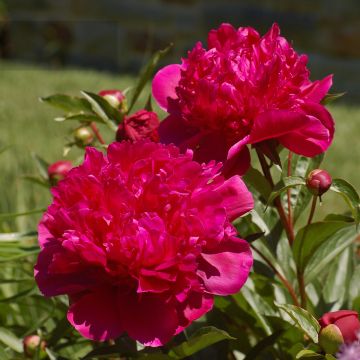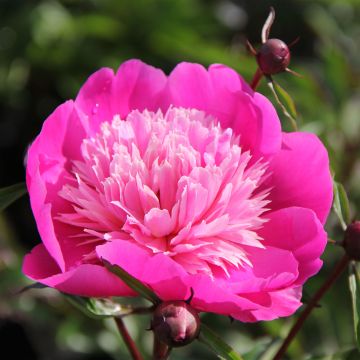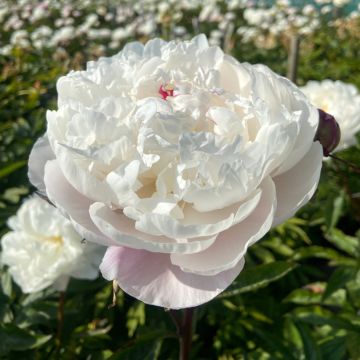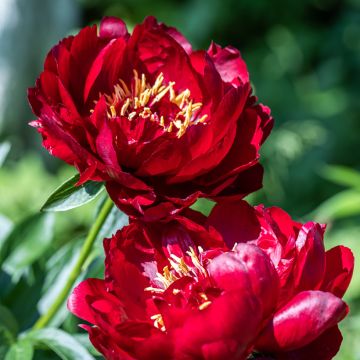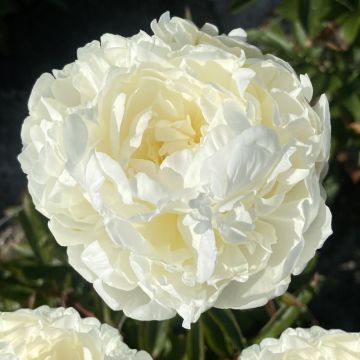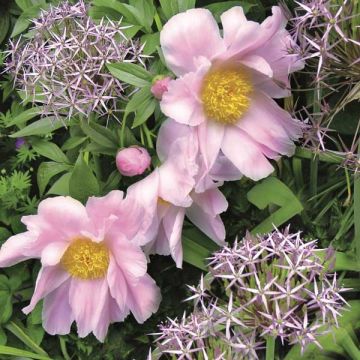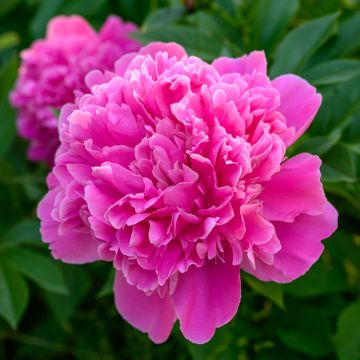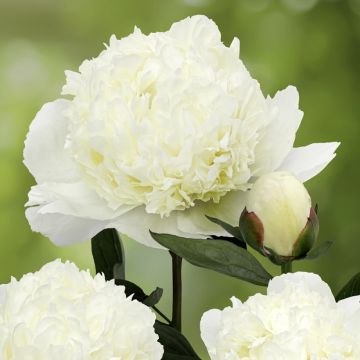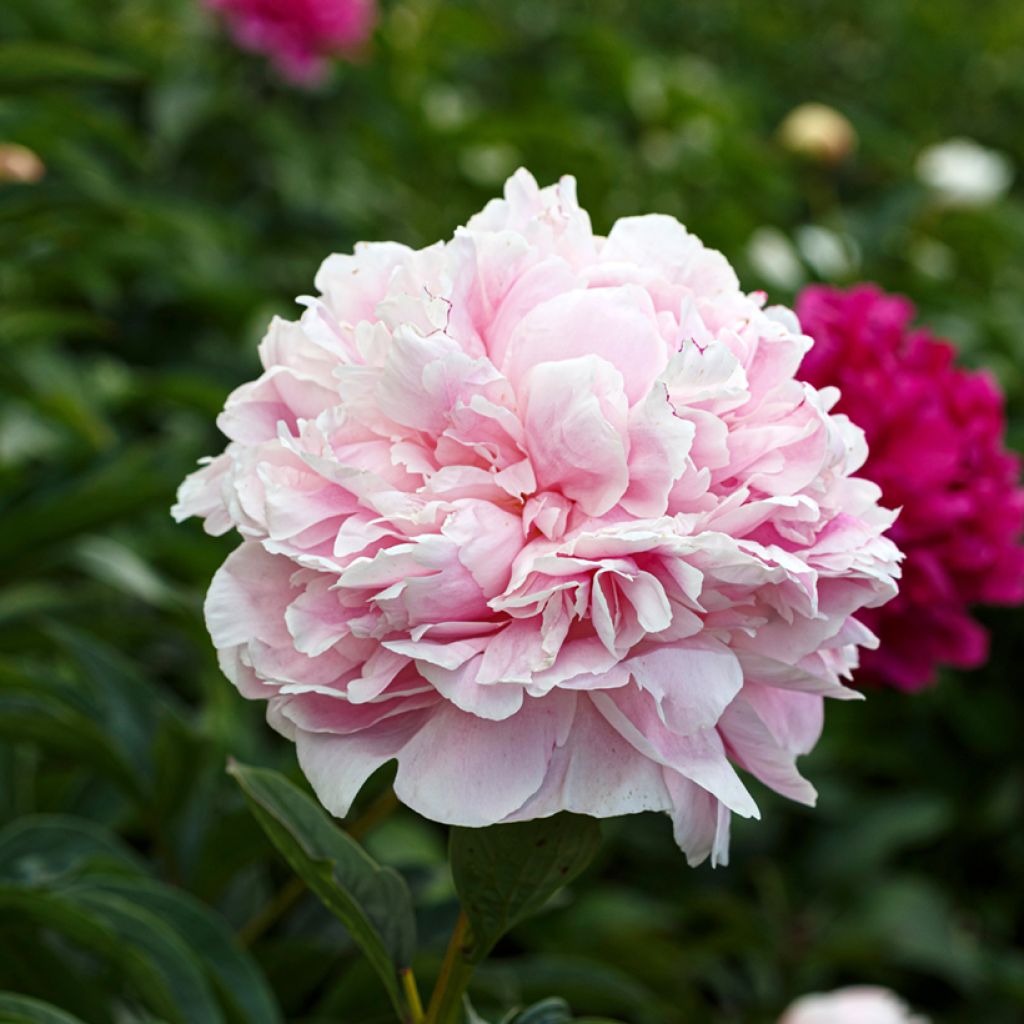

Paeonia lactiflora President Taft
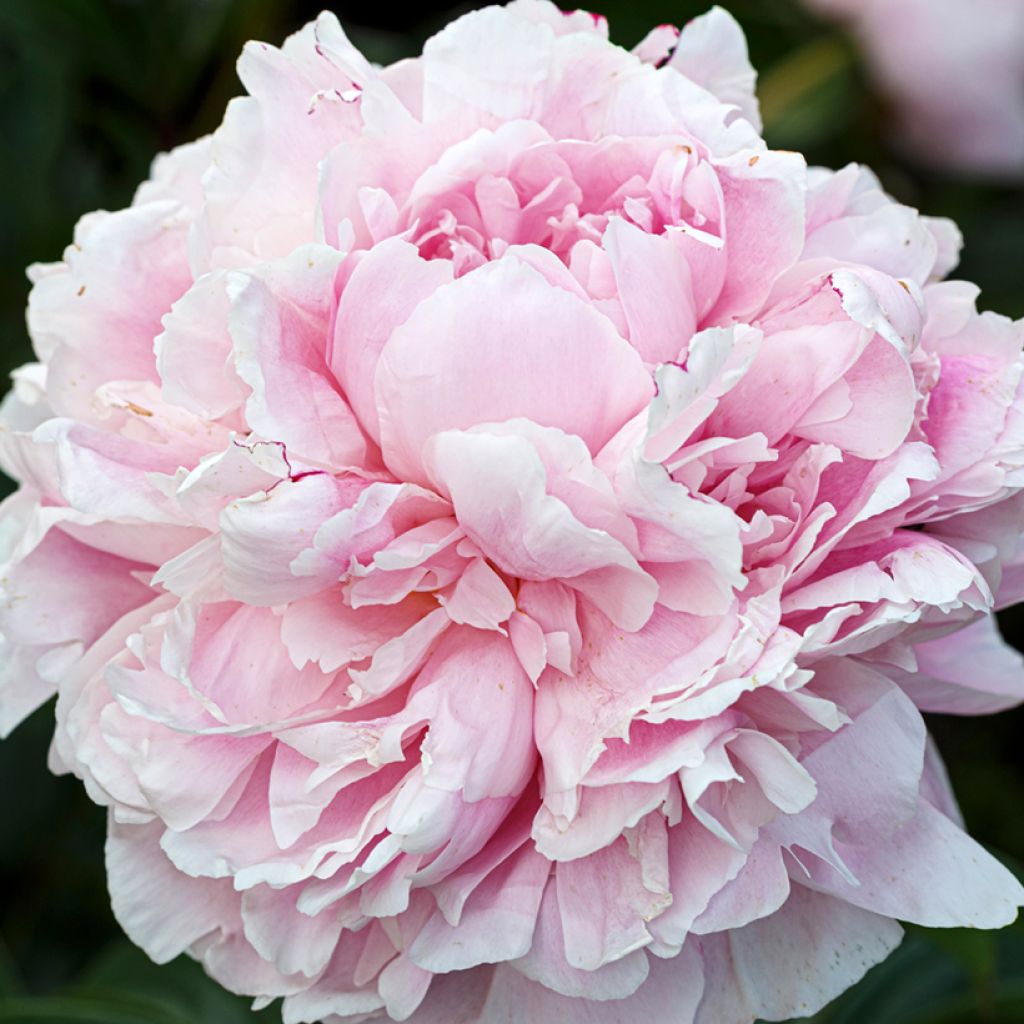

Paeonia lactiflora President Taft
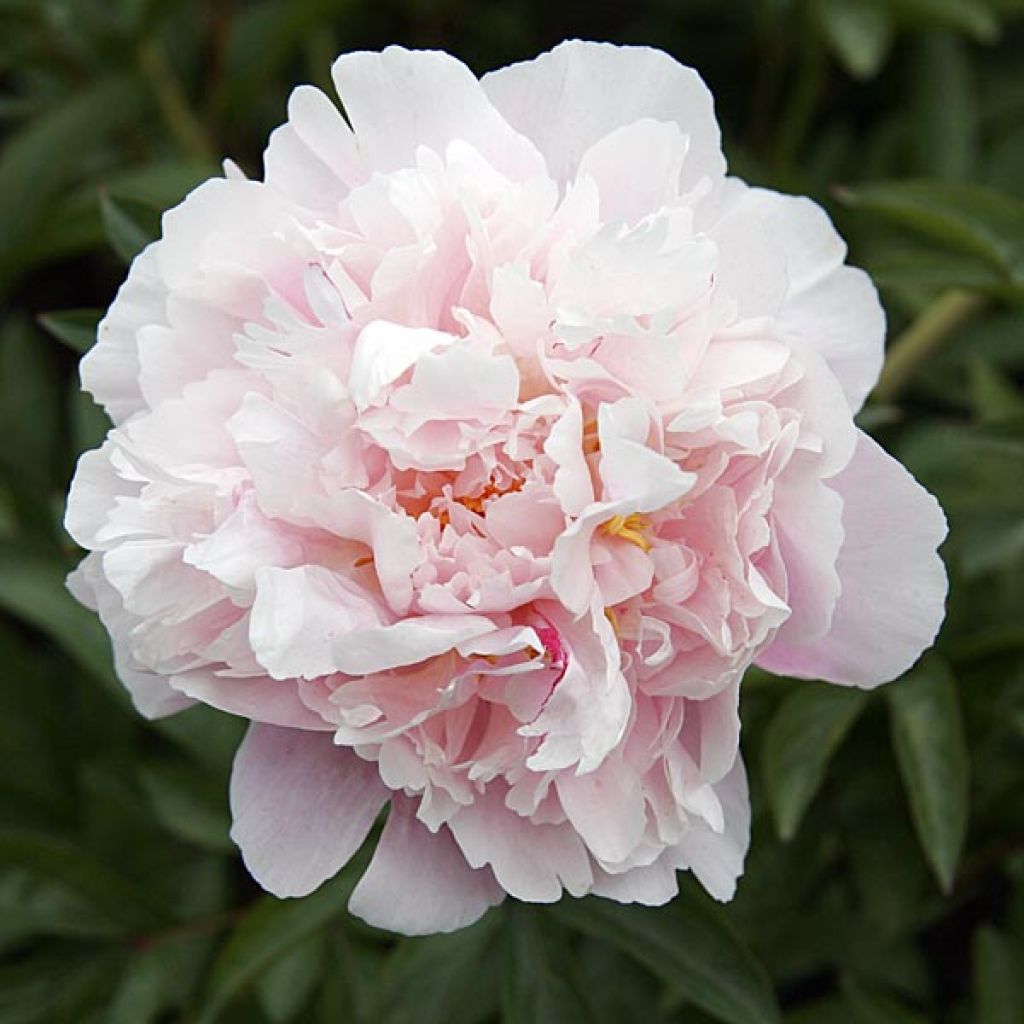

Paeonia lactiflora President Taft
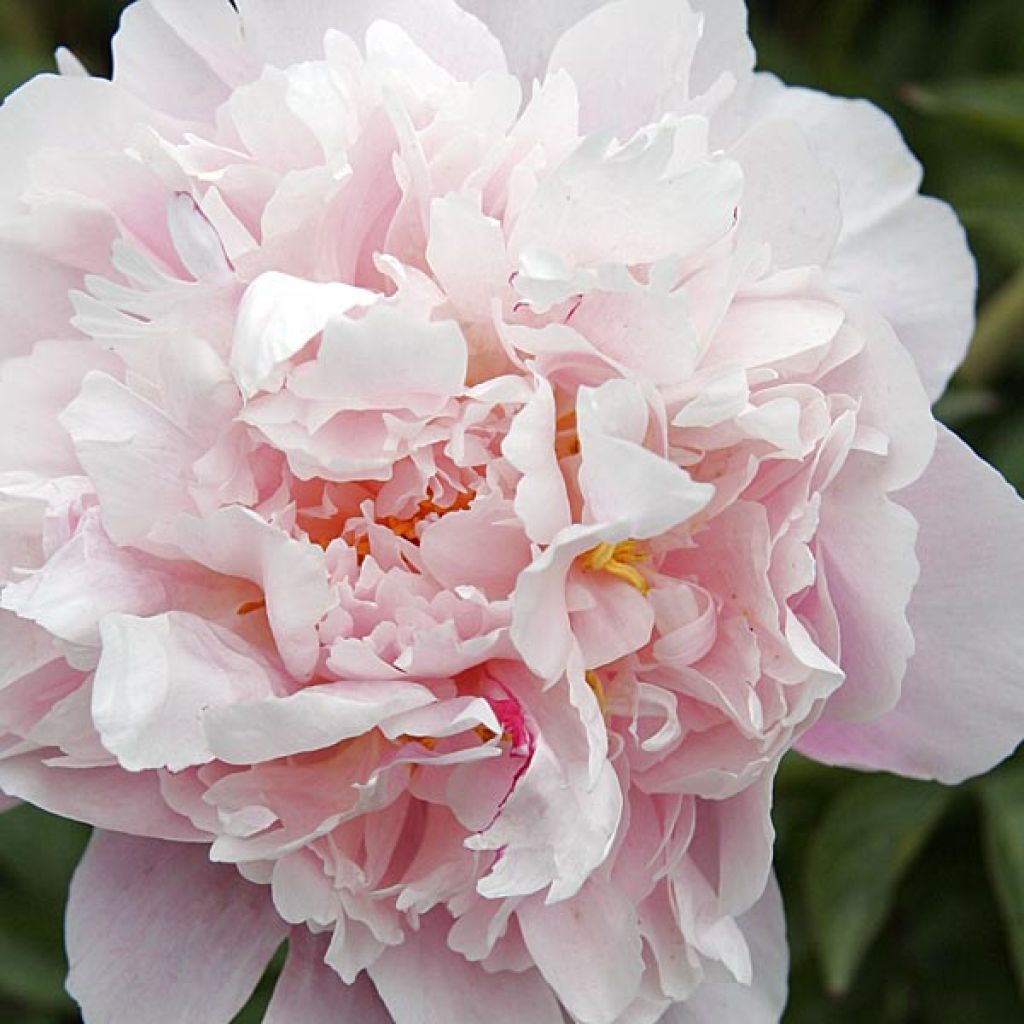

Paeonia lactiflora President Taft
Paeonia lactiflora President Taft
Paeonia x lactiflora Président Taft
Chinese Peony, Common Garden Peony
Why not try an alternative variety in stock?
View all →This plant carries a 12 months recovery warranty
More information
We guarantee the quality of our plants for a full growing cycle, and will replace at our expense any plant that fails to recover under normal climatic and planting conditions.
From €5.90 for pickup delivery and €6.90 for home delivery
Express home delivery from €8.90.
Does this plant fit my garden?
Set up your Plantfit profile →
Description
The 'President Taft' Peony, also sold under the name 'Queen Hortense', is a very old variety derived from Paeonia lactiflora. While its abundant flowering is wildly romantic, its growth is vigorous and its rootstock very durable, qualities that have allowed it to withstand trends and stand the test of time. It is among the latest to bloom with large, highly fragrant, double and ruffled flowers in a very delicate powdery pink when they first open. Its translucent petals take on silvery highlights when fully matured and are sometimes touched with a few purple nuances at the core. Occasionally considered somewhat susceptible to bud rust in overly humid conditions, this wonderful variety performs very well in the sun, in an open location and planted in healthy soil.
Chinese herbaceous peonies are mainly derived from Paeonia lactiflora, a perennial herbaceous plant native to central and eastern Asia (from eastern Tibet, northern China, to eastern Siberia), where it naturally grows in woods and meadows. This plant belongs to the family of buttercups or peonies.
The 'President Taft' variety is a French horticultural creation (Jacques Calot), dating back to 1857. This peony forms a herbaceous and branching, bushy clump from spring onwards reaching 80 cm (32in) to 1.20 m (4ft) in all directions, depending on the growing conditions. Its large 14 cm (6in) in diameter, very double flowers usually appear for about two weeks in early June, depending on the climate. They emerge as a large candy pink bud, then open into a pink, fluffy pompom. The small petals are dense, with those on the inside being paler, narrower, and sparser, sometimes tinged with pink-purple. This variety is vigorous, but its stems sometimes require staking, especially in partially shaded conditions. The young, purple and shiny foliage, unfolds into large, dark green, deeply cut leaves carried by a petiole that divides into 3, with lanceolate or ovate-lanceolate segments. The leaflets are entire or sometimes lobed. They disappear in winter, while the buds that will develop in spring stay at ground level. This perennial plant grows from a large fleshy root that does not like being moved.
Peonies are among the plants that form the foundation of a garden. In the past, every garden, from the humblest to the most elaborate, proudly displayed clumps of flowers that made their way into the house with lilac and bluebell. The romantic and generous 'President Taft' Chinese peony can be planted in flower beds or along pathways, paired with timeless perennials such as columbines, bellflowers, phlox, carnations, or larkspurs. It will also increase the supply of cut flowers in the vegetable garden. It will not thrive in pots, where its needs will not be met. Over time, the peony plant becomes majestic and blooms more and more abundantly, producing up to 60 flowers.
Report an error about the product description
Paeonia lactiflora President Taft in pictures


Flowering
Foliage
Plant habit
Botanical data
Paeonia
x lactiflora
Président Taft
Ranunculaceae
Chinese Peony, Common Garden Peony
Cultivar or hybrid
Other Herbaceous and hybrid Peonies
Planting and care
The best time to plant peonies is in the autumn. Plant them in the sun or in a clear exposure, spaced 60cm (24in) apart. They like cold winters that promote dormancy and the formation of flowers. The soil should be loose, deep, fertile and moist. They need space and are sensitive to competition from other species. Prepare a hole 50 x 50 x 50 cm (20in), mix organic fertiliser with your soil, partially refill the hole, place your plants and cover with 6 cm (2in) of soil above the buds. After planting, firm the soil and water generously. Our tip: Cut your peonies at sunrise when the buds begin to colour and don't wait too long to put them in water.
Planting period
Intended location
Care
This item has not been reviewed yet - be the first to leave a review about it.
Haven't found what you were looking for?
Hardiness is the lowest winter temperature a plant can endure without suffering serious damage or even dying. However, hardiness is affected by location (a sheltered area, such as a patio), protection (winter cover) and soil type (hardiness is improved by well-drained soil).

Photo Sharing Terms & Conditions
In order to encourage gardeners to interact and share their experiences, Promesse de fleurs offers various media enabling content to be uploaded onto its Site - in particular via the ‘Photo sharing’ module.
The User agrees to refrain from:
- Posting any content that is illegal, prejudicial, insulting, racist, inciteful to hatred, revisionist, contrary to public decency, that infringes on privacy or on the privacy rights of third parties, in particular the publicity rights of persons and goods, intellectual property rights, or the right to privacy.
- Submitting content on behalf of a third party;
- Impersonate the identity of a third party and/or publish any personal information about a third party;
In general, the User undertakes to refrain from any unethical behaviour.
All Content (in particular text, comments, files, images, photos, videos, creative works, etc.), which may be subject to property or intellectual property rights, image or other private rights, shall remain the property of the User, subject to the limited rights granted by the terms of the licence granted by Promesse de fleurs as stated below. Users are at liberty to publish or not to publish such Content on the Site, notably via the ‘Photo Sharing’ facility, and accept that this Content shall be made public and freely accessible, notably on the Internet.
Users further acknowledge, undertake to have ,and guarantee that they hold all necessary rights and permissions to publish such material on the Site, in particular with regard to the legislation in force pertaining to any privacy, property, intellectual property, image, or contractual rights, or rights of any other nature. By publishing such Content on the Site, Users acknowledge accepting full liability as publishers of the Content within the meaning of the law, and grant Promesse de fleurs, free of charge, an inclusive, worldwide licence for the said Content for the entire duration of its publication, including all reproduction, representation, up/downloading, displaying, performing, transmission, and storage rights.
Users also grant permission for their name to be linked to the Content and accept that this link may not always be made available.
By engaging in posting material, Users consent to their Content becoming automatically accessible on the Internet, in particular on other sites and/or blogs and/or web pages of the Promesse de fleurs site, including in particular social pages and the Promesse de fleurs catalogue.
Users may secure the removal of entrusted content free of charge by issuing a simple request via our contact form.
The flowering period indicated on our website applies to countries and regions located in USDA zone 8 (France, the United Kingdom, Ireland, the Netherlands, etc.)
It will vary according to where you live:
- In zones 9 to 10 (Italy, Spain, Greece, etc.), flowering will occur about 2 to 4 weeks earlier.
- In zones 6 to 7 (Germany, Poland, Slovenia, and lower mountainous regions), flowering will be delayed by 2 to 3 weeks.
- In zone 5 (Central Europe, Scandinavia), blooming will be delayed by 3 to 5 weeks.
In temperate climates, pruning of spring-flowering shrubs (forsythia, spireas, etc.) should be done just after flowering.
Pruning of summer-flowering shrubs (Indian Lilac, Perovskia, etc.) can be done in winter or spring.
In cold regions as well as with frost-sensitive plants, avoid pruning too early when severe frosts may still occur.
The planting period indicated on our website applies to countries and regions located in USDA zone 8 (France, United Kingdom, Ireland, Netherlands).
It will vary according to where you live:
- In Mediterranean zones (Marseille, Madrid, Milan, etc.), autumn and winter are the best planting periods.
- In continental zones (Strasbourg, Munich, Vienna, etc.), delay planting by 2 to 3 weeks in spring and bring it forward by 2 to 4 weeks in autumn.
- In mountainous regions (the Alps, Pyrenees, Carpathians, etc.), it is best to plant in late spring (May-June) or late summer (August-September).
The harvesting period indicated on our website applies to countries and regions in USDA zone 8 (France, England, Ireland, the Netherlands).
In colder areas (Scandinavia, Poland, Austria...) fruit and vegetable harvests are likely to be delayed by 3-4 weeks.
In warmer areas (Italy, Spain, Greece, etc.), harvesting will probably take place earlier, depending on weather conditions.
The sowing periods indicated on our website apply to countries and regions within USDA Zone 8 (France, UK, Ireland, Netherlands).
In colder areas (Scandinavia, Poland, Austria...), delay any outdoor sowing by 3-4 weeks, or sow under glass.
In warmer climes (Italy, Spain, Greece, etc.), bring outdoor sowing forward by a few weeks.

































